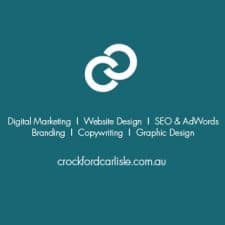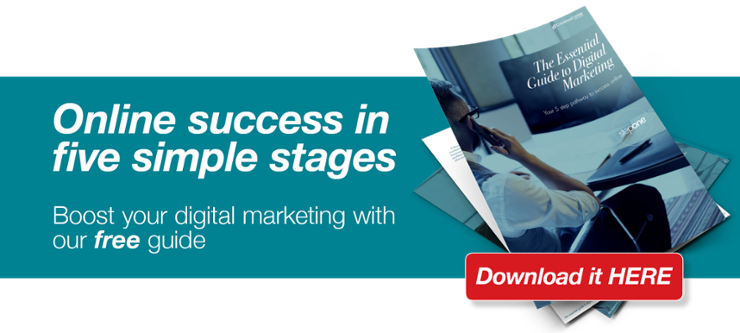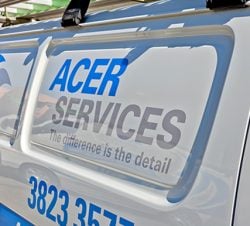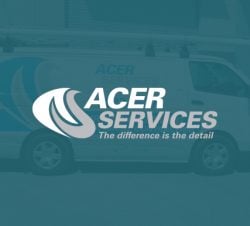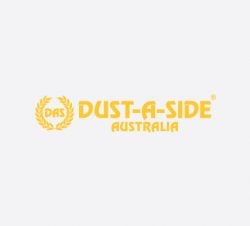
Pointers to help you get more business from your website
I was with a group of business owners at a function recently when someone asked me an interesting question.
“Where exactly,” he asked, “Does an agency like yours begin when getting an Inbound Marketing campaign started?”
As we talked about it, it became obvious that his question was really about his own business. He was tossing up whether to hire a digital marketing agency, or whether to try and DIY his Inbound Marketing.
There are so many aspects to digital marketing, and he wasn’t sure:
- Who does what? (ie. Does he do some stuff? Or does the agency do it all?)
- Who’s who in the “digital zoo”? (What type of expertise does he need?)
- What does he need to get the job done for his business? (or, Where to start?)
In this fellow’s case, he already has a sales team and business is bubbling along.
But he knows that there is change in the wind. Sure, his sales team is profitable. But he has a niggling feeling that they could be kicking even more goals if they had more leads to work with.
His website wasn’t delivering what he needed lead-wise, which is why he was interested in getting started with Inbound Marketing.
What’s more – he’s right about there being a “change in the wind” for sales teams. Dead right.
Yes, the Internet has been around for quite a while. Yet the number of his potential buyers who go online every day is steadily increasing. In just the last three years, Internet usage among adults has increased by a further 5%, according to Pew Research
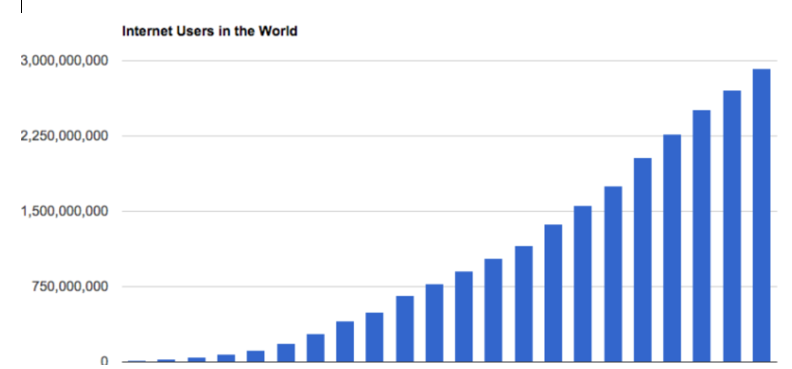
And it’s not just that there are more people ‘on the Internet’.
The Internet has changed their behaviour when they buy. And that’s changed the game for sales teams.
While the role of the sales team is vital, the focus has shifted to the last part of the Buyer’s Journey. That’s when potential customers have done their online research and are now ready to talk to a sales person.
So yes. The question of whether this business owner needs to get a solid online presence is a no-brainer. He does!
Having thought about our conversation quite a bit since then, I’ve written this article to try and give you some clarity. It covers off some ‘first steps’ that he and I talked about, that may help you if you’re wondering how to get your toe in the water with digital Inbound Marketing.
Understanding what you are trying to achieve with digital marketing
Marketing has always been about connecting with your potential buyers:
- In the right place, and
- At the right time.
And nothing has changed there.
In the old days, that meant using numerous tactics, such as making calls, running newspaper and TV ads, and rolling out direct mail campaigns.
This was what’s called “Outbound” marketing.
By contrast, digital marketing uses numerous tools such as your website, digital advertising, email marketing, and social media promotion.
It draws people to you – which is why it’s known as “Inbound” marketing.
The question we are answering here though, is: where to start?
A good way to figure out what you need to do, is to break the big picture of ‘Inbound Marketing’ down into stages. You can then look at what you need in each stage for your particular business.
We like to think of this as a four-step process:
- Attract — bringing people into your website’s sales funnel
- Convert — interacting and beginning a relationship to build segmented lists and nurture potential buyers who are not yet qualified to talk to sales
- Close — handing over Sales Qualified Leads to your sales team
- Delight — generating repeat and referral business

By the way, in some cases, working on the “Attract” stage this isn’t always the best ‘first step’.
For example, if your website is already drawing a high volume of traffic (indicating that you may have things already rolling along in the “Attract” stage), you might want to focus on the next stages of your sales funnel (“Convert” and “Close”) to improve business that way.
Once you have those stages working, you can then circle back and build on your Attract stage to being even more traffic into your Inbound funnel.
NOTE: We can help you to figure where you stand with our Marketing Opportunity Analysis.
For around $2K you’ll get the focused attention of experts from four different disciplines who’ll pull your report together. You get an actionable plan, and the outlay can be deducted from your engagement fee if you decide to get us to sort things out for you down the track. Or, you can implement the plan yourself.
It is a fantastic deal that offers great value as a digital marketing ‘first step’. You’ll learn more about how this works HERE.
Onward …
Let’s assume for the purposes of this article that you are starting at the top (the Attract stage) of the funnel. We’ll take a look at the things you can do to get that stage working at its best.
Of the multitude of strategies open to you, let’s look at the three most obvious:
- Search Engine Optimisation (SEO)
- Social Media
- Pay Per Click advertising (PPC)
All may have a role to play for your business, so I’ll give you a brief heads-up and some insights on each one. Then we’ll look at some first steps you can take to get your Inbound Marketing campaign started.
Search Engine Optimisation (SEO)
It sounds obvious, but it’s worth repeating: Google doesn’t know what you have to offer unless your website tells it.
So to make your site visible, you must make it clear and easy for the Google Machine to understand and index your website.
SEO is the process of optimising your website to make it easy for search engines to "rank" your content higher in search engine results pages. That way, we aim to increase the amount of organic (or free!) traffic your website receives.
A good SEO strategy will work in four broad areas:
- A clear “Pillars & Clusters” structure to make it easy for Google to see what’s what, and serve up your content to people who are searching for it.
- Great content (both web pages and blogs) that explains what problems you solve, and how you go about doing so
- Technical work to make sure everything under the hood is ship-shape
- Off-page work, to promote your content on and to external sites
SEO Strategy — Understanding “Pillars and Clusters”
I could write an entire blog post about Pillars & Clusters. But here’s a quick overview.
You need to set your content up to align with Google’s focus on “topics”, rather than on the old school “keywords” based strategy.
Part of this process requires setting up the structure of your website so that you have strong, information-rich ‘pillar’ pages, each focussing on a topic that is important to your business.
Then, you need to create ‘clusters’ of blogs and content pages around these pillars, each with appropriate links back to your main pillar page so Google can see what’s what.
This diagram will show you the basics, and I recommend you read this article on how to use SEO to rank #1 on Google for further information. It’s fundamental to getting your web pages found on Google!
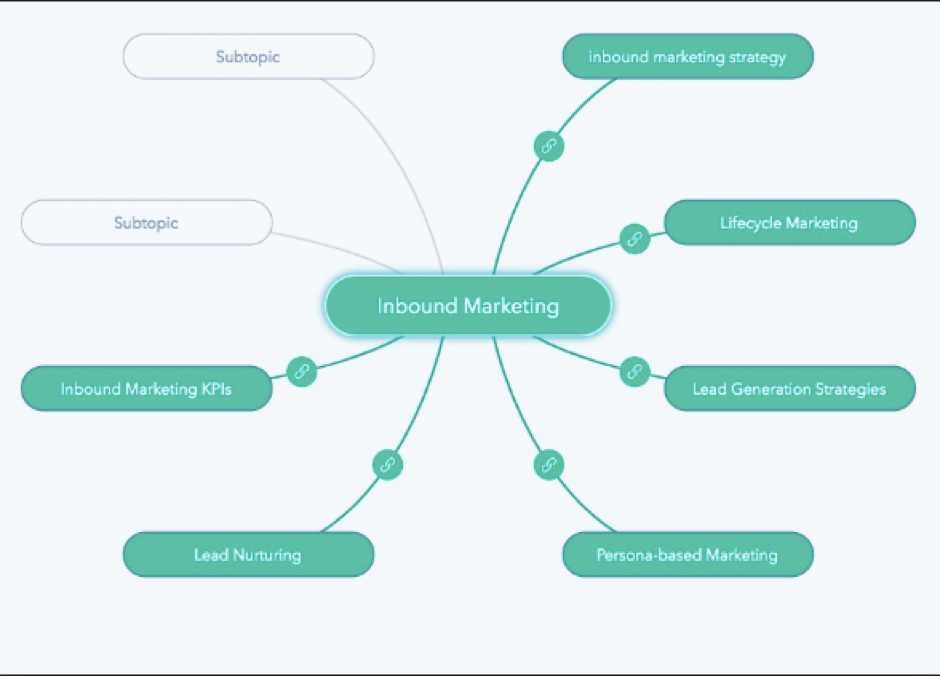
All of this brings me to…
A few words about the quality of blog articles that go on your website
There is more to creating effective blog articles than just “splashing some words on the page”.
With blogging, the quality of your content – from the choice of topic through to the length of the article – is critical.
Some business owners outsource this to overseas writers to save costs. If that’s currently your plan, I’d be thinking twice about this if I were you. I can tell you from what I’ve personally seen that poor content can mean you won’t get the result that you could have — and you won’t see the ROI from your digital marketing outlay that you wanted.
This isn’t just my opinion.
We have data that shows the difference that good blogging makes. (And yes, I’m happy to show you some examples if you wanted to book a quick call to go through this.)
As a digital marketing agency, we track the performance of every blog post we write, checking on KPIs such as:
- The amount of traffic each blog article brings to the site
- The amount of engagement from that traffic, and ultimately
- The number of conversions that each blog post contributes to.
We have seen many (many!) times that well-crafted content will outperform rubbish articles that are poorly written and poorly optimised. In some cases, well written content will produce more leads in just a few months, than poor quality articles on the same site have produced in years.
It’s up to you of course, but when it comes to cheap content, as your granny told you, “Buy it on price means buying it twice”.
You’d be better off any day with:
- Three well-crafted blog posts that attract the right kind of potential buyers to your site, than
- 10 rubbish blogs that do nothing and lower your ‘street cred’ with Google.
Social Media Marketing
This is where you promote your brand and your content on Social Media channels to increase brand awareness, drive traffic, and generate leads for your business.
The channels you can use in social media marketing include:
- Snapchat
- Google+ (Nah. Not Google+)
Social Media is a bigger story than we can do justice to here, but if I can give you two important takeaways…
1. DON’T SPREAD YOURSELF TOO THIN
That list of Social Media platforms looks like a few harmless bullet points on a page.
But don’t be fooled. They are a potential time and money suck.
If you are going to use social, make sure that you focus on just one or two platforms that are relevant for your market, rather than trying to be all over the place like a mad dog’s breakfast.
With our clients, we set up a schedule of posts at the right times to make sure that they are seen in the feeds of their followers.
And…
You need to measure your results so you know you aren’t just barking into the wind. At Crockford Carlisle we use UTM code to track not just the ‘clicks’ that come from social media, but the actual contacts that come into the funnel.
It is fiddly, but I’d highly recommend it so you KNOW what’s going on.
And speaking of which…
2. LOOK FOR ROI
I worry a lot when I hear people talk about ‘brand awareness’ and ‘impressions’ as a reason to spend your time and hard-earned money on Social Media.
Sure, if you are a major national company with oodles of dollars to spend all over the place, then ‘brand awareness’ is going to be important.
But for the average enterprise, I’d be cautious. Very cautious.
By all means build your brand — but make sure that, where possible, your social media is hooked up with a strong Call To Action to attract people into your digital funnel.
From there, you can nurture them to become leads that your sales team can work with.
If you want my opinion, I’d choose getting five qualified leads for your sales team over 5,000 “Facebook impressions” of dubious value any day.
So like I said earlier, track your results!
Pay-Per-Click (PPC)
PPC is a way of driving traffic to your website by paying a publisher every time your ad is clicked.
One of the most common types of PPC is Google Ads (formerly known as Google AdWords). It lets you pay for top slots on Google's search engine results pages at a price "per click" of the links you place.
Other channels where you can use PPC include:
- Paid ads on Facebook.
- Promoted Tweets on Twitter.
- Sponsored Messages on LinkedIn.
- Affiliate Marketing — performance-based advertising where you receive commission for promoting someone else's products or services on your website. Affiliate marketing channels include:
If I can give you a word of caution here, you need to tread carefully with PPC.
I can’t tell you the number of sad and sorry tales from people who have poured money into Google Ads or Facebook — and haven’t seen a tangible return.
Don’t get me wrong. PPC can work very well, and we use it a lot with many of our clients as it is very profitable for them.
However…
I takes a great deal of expertise and diligence to manage the campaign profitably. Every link in the chain must be right — from the selection of keywords, through to the ‘angles’ in the ads and the content and conversion path on your landing pages.
If you have just one of those elements out of kilter, costs will go up and conversions will go down.
And on the subject of conversions…
We STRONGLY suggest that you develop a ‘test it and see’ mindset from the start.
We never write just one ad. We always have at least three running on a rotational basis, to test which ‘angle’ has the most appeal — and from there we measure which one produces the most conversions.
With PPC, do not make the mistake of ‘setting and forgetting’. You need to actively manage your campaigns to ensure that you are shaving costs where you can and optimising for good, high-converting clicks.
We are relentless with this here in our bunker, and the payoff for our clients is considerable!
So…. of those three, where do you start with Inbound Marketing?
Remembering that I haven’t looked at your Analytics, haven’t seen your site, and haven’t talked to you about your goals and challenges, I’m shooting in the dark.
But, all that being said, I’m going to suggest that the safest bet is to get cracking with your SEO strategy.
To do that, start with these three things:
1. Figure out your personas
A persona is a representation of the type of person you want to attract to your site.
You’ll most likely have multiple personas for your business, but a starting point is to focus on one or two. Figure out:
- Who they are
- What they want to achieve
- What they are searching for on the Internet
By doing this, you can start to build out content on your website, and you can begin to attract potential buyers to your website.
If you want a hand with doing this, you can learn more about figuring out your market personas by getting our free e-Book, “Turn Prospects Into People”.
2. Start answering your personas’ questions with blog articles
Once you have a handle on who you want to attract and how they tick, get cracking with creating meaty, information-rich blog posts that will help to answer their questions.
As I said earlier, quality is important.
Don’t just blog about you and what you do. Instead, take the time to give useful information that will help people in their quest for the right solution.
3. Set up your main Pillar pages
As well as blogging, you also need those vital Pillar pages on your site.
These are the product or service pages that offer insight and in-depth information about your offering and the way you do business.
Once these pages are in place, you then link your existing and new blog posts back to them. This builds their authority with Google and helps the search engine to understand the relevance of your website to your potential buyers’ questions.
Want to get your Inbound Marketing strategy sorted and profitable?
If you’d like to talk about your Inbound Marketing and SEO strategy, and how you can get the ball rolling, please call and we can talk it over.
We won’t “talk you into using us”. There’s no value in that.
We have long, enjoyable working client relationships, and that means starting things off on a good footing — with straight talk and clear thinking.
We’ll look at your numbers, your site, your competitors, what you are currently doing, and where you see the problems and challenges are.
From that call, we can give you some first steps to consider.
You can call us now on (07) 3891 3800. Or if you prefer, just use the calendar on this page to pick a day/time to book 15 minutes for a heads-up phone call.
We work with business owners from around Australia who are serious about growth, but are often frustrated that they’ve spent time, money, and effort on their website, yet it still doesn’t produce the traffic and leads they had hoped for.
We’d love to work with you too.









